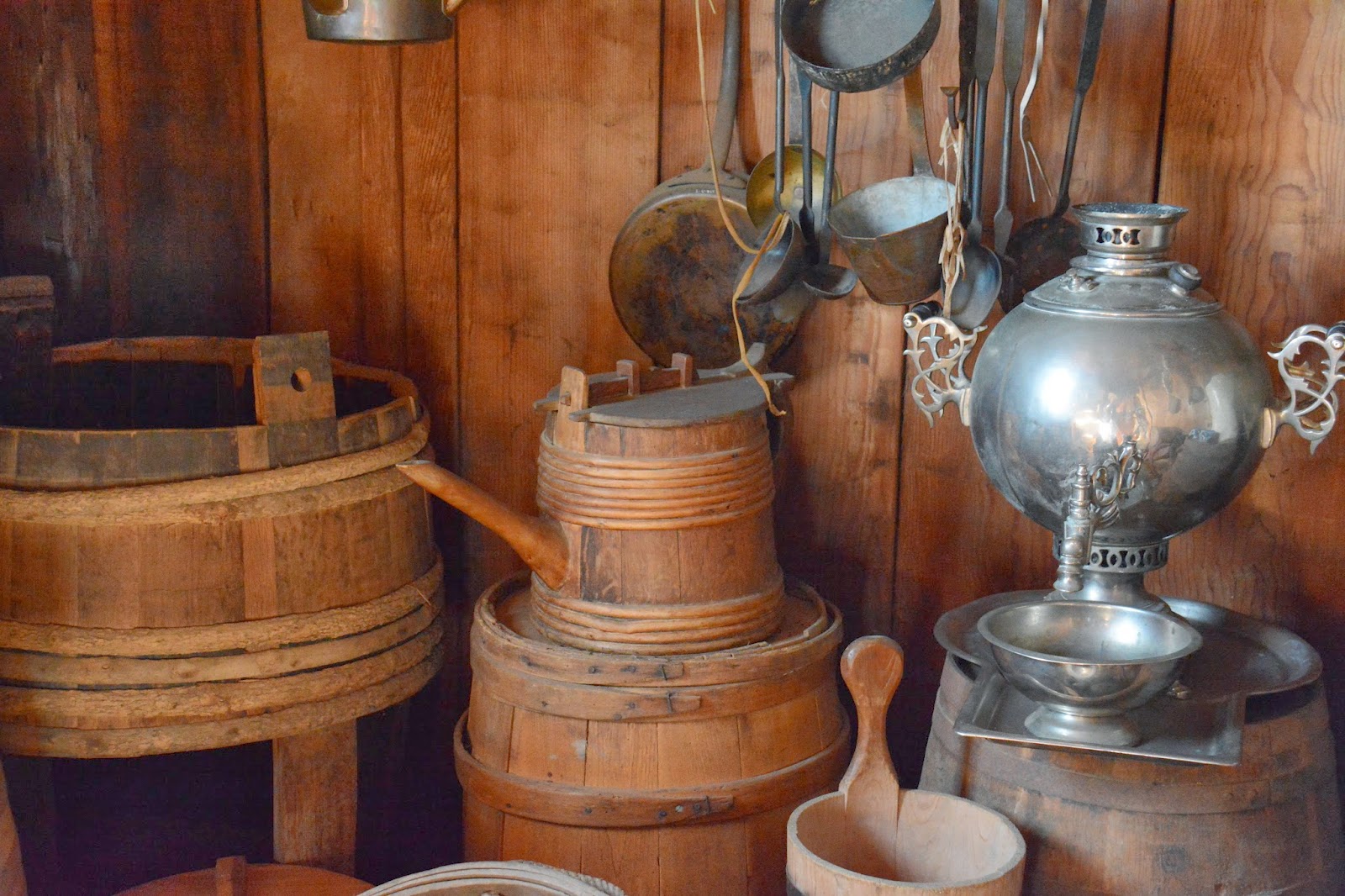.JPG) |
| The moods of Fort Ross change with the weather. This was Sunday morning. Saturday morning, shown in the photo below was clear. |
The Russian Orthodox chapel at Fort Ross with one of the guard towers. Guard towers are on three corners of the Fort.
I am in California for two months before heading back to Yellowstone for another season as an interpretive photo guide, driving one of the beautiful historic yellow open-top touring buses. This blog shares photos from Fort Ross, on the Sonoma County Coast north of San Francisco. Chris and I headed there on Friday, March 14 when he got off work to join other members of the Diablo Valley Camera Club for a weekend field trip. Saturday morning was clear, calm and we spent the day at the Fort and beach below with lunch together at a restaurant a few miles up the coast. Then we returned to the Fort. In the evening we relaxed along with a spouse and significant other who are not photographers, and listened to a jazz combo over a light dinner at Timber Cove.
Fort Ross was the southern outpost of the Russian-American Company. The Russian settlement of Alaska, with their headquarters in Sitka, Alaska, ( see my blog of September 7, 2013) was involved primarily in the harvesting of fur seals for their rich, lush pelts. These were in high demand in China and elsewhere and the major revenue stream for Russian expansion in the new world.
This fort, as well as a harbor at Bodega Bay, a seal station on the Farallon Islands off San Francisco, and three small farming communities near present day Grafton, Bodega Bay, and along the Russian River were established as an agricultural base to supply the Russian-American holdings in Alaska and to trade with the Spanish who were the other European colonists in California. Although some fur trapping went on here, by 1812 when the Russians established their base in northern California, the fur seals population was low. By 1817 they were gone. But the Fort and its outlying areas lasted a bit longer as a supply base. In 1842, the Russians sold the Fort and its lands to John Sutter, a Swiss immigrant who already had sizeable California holdings including Sutters Fort near the present Capitol, Sacramento.
The first shipyard in California was Russian. They also brought the first glass. and built the first windmills. And while the Spanish and Mexican settlers primarily used adobe, the Russians built the first European all wood buildings. The Russians also brought the first smallpox vaccine to California, although the numbers of Native Americans who died of smallpox, measles, and other white man's diseases, in Spanish and Russian communities was high. The community of Fort Ross and the closeby satelite communities was a mix of Russians, Siberians, Aleuts, Tlingits, and local Kashaya Pomo. Intermarriage was common.
Today the old Russian Fort is a California State Park. Only one of the original buildings remains, but the State has restored and rebuilt several others. Drawings, early photographs, and information from Russian archives allowed accurate portrayals of the early architecture. And they have refurbished the buildings with the kinds of goods which would have been used here.
It was a quiet weekend when we visited, but there are living history events during the year and the chapel is still used occassionally by the Russian Orthdodox Church. Visits from Russians, looking to understand more of their history, occur. There have been exchange visits between California and Russia including decendants of the Russian\Alaskan\Pomo occupants of the Fort who are part of the local Native American community along this section of coastal California.
|
 |
| The residentts had to be self-sufficient. There was trade with the Spanish and Mexicans to the south, but most of the goods received were agricultural. |
+-+Copy.JPG) |
| Barely visible in the fog is the Call farmhouse, typical of ranching along the coast. |
 |
| Fog, eucalptus trees and the top of the stockade. |
 |
| Another samovar as well as kitchen implements. |
On Sunday we returned to the Fort due to the heavy fog and the chance for different images. But we followed that by going north to photograph the wayside chapel at Sea Ranch, an unusal small building, open for meditation and quiet reflection. And, as we headed south later in the day the waves had kicked up, wind had arrived. Its impossible not to get caught up in trying to capture the power of the waves as they break on the rocks.

















.JPG)
No comments:
Post a Comment